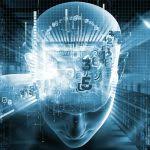GANs Unleashed the Deepfakes Revolution and Its Implications for Security.
Generative Adversarial Networks (GANs) stand out, not just for their ability to create stunningly realistic synthetic media, but also for their pivotal role in the emergence of deepfakes. This article explores the fascinating world of GANs, their connection to deepfakes, and the serious implications this technology poses, particularly in contexts where authentic visual information is crucial, like military intelligence and strategic decision-making.
Understanding Generative Adversarial Networks (GANs): A Dynamic Duo
At their core, GANs are a clever machine learning architecture composed of two neural networks constantly competing against each other:
- The Generator: This network’s role is to create new, synthetic data samples (images, videos, even audio) that mimic the characteristics of the real-world data it has been trained on. Think of it as a digital artist trying to create the most convincing forgery.
- The Discriminator: This network acts as a judge, its task to distinguish between the real data and the generated, fake data. It scrutinizes the output of the Generator, honing its ability to identify inconsistencies and tell what’s genuine from what’s not.
This adversarial relationship is the key to GANs’ power. The Generator constantly learns from the Discriminator’s feedback, improving the realism of its creations with each iteration. Similarly, the Discriminator becomes more adept at detecting fakes as the Generator’s skills evolve. This ongoing “cat and mouse” game drives both networks to achieve remarkable levels of sophistication.
Deepfakes: When GANs Get Creative (and Deceptive)
Deepfakes are essentially high-quality, synthetic media created using deep learning techniques, and GANs are a primary tool in their creation. By training a GAN on a large dataset of images or videos of a person, for example, the network can learn to generate new images or videos where that person appears to say or do things they never did.
Several techniques leverage GANs to create convincing deepfakes:
- Face Swapping: This is perhaps the most well-known application. GANs can seamlessly replace one person’s face with another’s in a video, creating the illusion that the swapped individual is performing the actions in the original footage.
- Object Transfiguration: GANs can be used to alter the appearance of objects within images or videos, changing their shape, color, or even replacing them entirely. Imagine changing a tank’s camouflage pattern or altering the weather conditions in a reconnaissance photo.
- Style Transfer: GANs can transfer the “style” of one image or video to another. For example, you could take footage of a city and apply a “post-apocalyptic” filter, creating a convincing but entirely fabricated scenario.
The Implications of Deepfakes: A Threat to Information Integrity
The potential for misuse of deepfake technology is vast and concerning, particularly in sensitive contexts such as military and intelligence operations.
- Misinformation and Propaganda: Deepfakes can be used to fabricate events, spread false narratives, and manipulate public opinion. Imagine a fabricated video showcasing enemy forces committing atrocities, used to incite violence or justify military action.
- Undermining Trust: The ability to create convincing fake videos can erode trust in legitimate sources of information. If people can no longer be sure whether a video is real or fake, it becomes more difficult to discern the truth.
- Strategic Manipulation: Deepfakes could be used to create false intelligence reports, sabotage negotiations, or even impersonate key leaders to issue misleading orders. The consequences of such deception could be catastrophic.
The Defense: Detecting GAN-Generated Content
Recognizing the potential for abuse, researchers are actively developing methods to detect GAN-generated content. These detection methods often focus on:
- Identifying Artifacts: GANs can sometimes leave subtle “fingerprints” in the generated images or videos, such as specific pixel patterns or inconsistencies in lighting.
- Analyzing Facial Features: Deepfakes often exhibit subtle anomalies in facial features or movements that a trained AI can detect.
- Examining Metadata: Modifications to images or videos can sometimes leave traces in the file’s metadata, providing clues about its authenticity.
- Reverse Engineering: Analyzing how the suspicious media was generated to determine its origin.
Developing reliable deepfake detection methods is an ongoing arms race. As GANs become more sophisticated, so too must the techniques used to identify them.
Conclusion: Navigating the GAN-Powered Future
GANs represent a powerful technological leap, with significant implications across various fields. While their potential for good is undeniable – from creating art to developing new medical treatments – their connection to deepfakes raises serious concerns about information integrity and national security.
Combating the threat posed by deepfakes will require a multi-faceted approach: ongoing research into detection methods, public awareness campaigns, and robust legal frameworks to deter malicious use. Ultimately, safeguarding the truth in the age of GANs demands a commitment to critical thinking, responsible technology development, and a renewed focus on verifying the authenticity of the information we consume.








